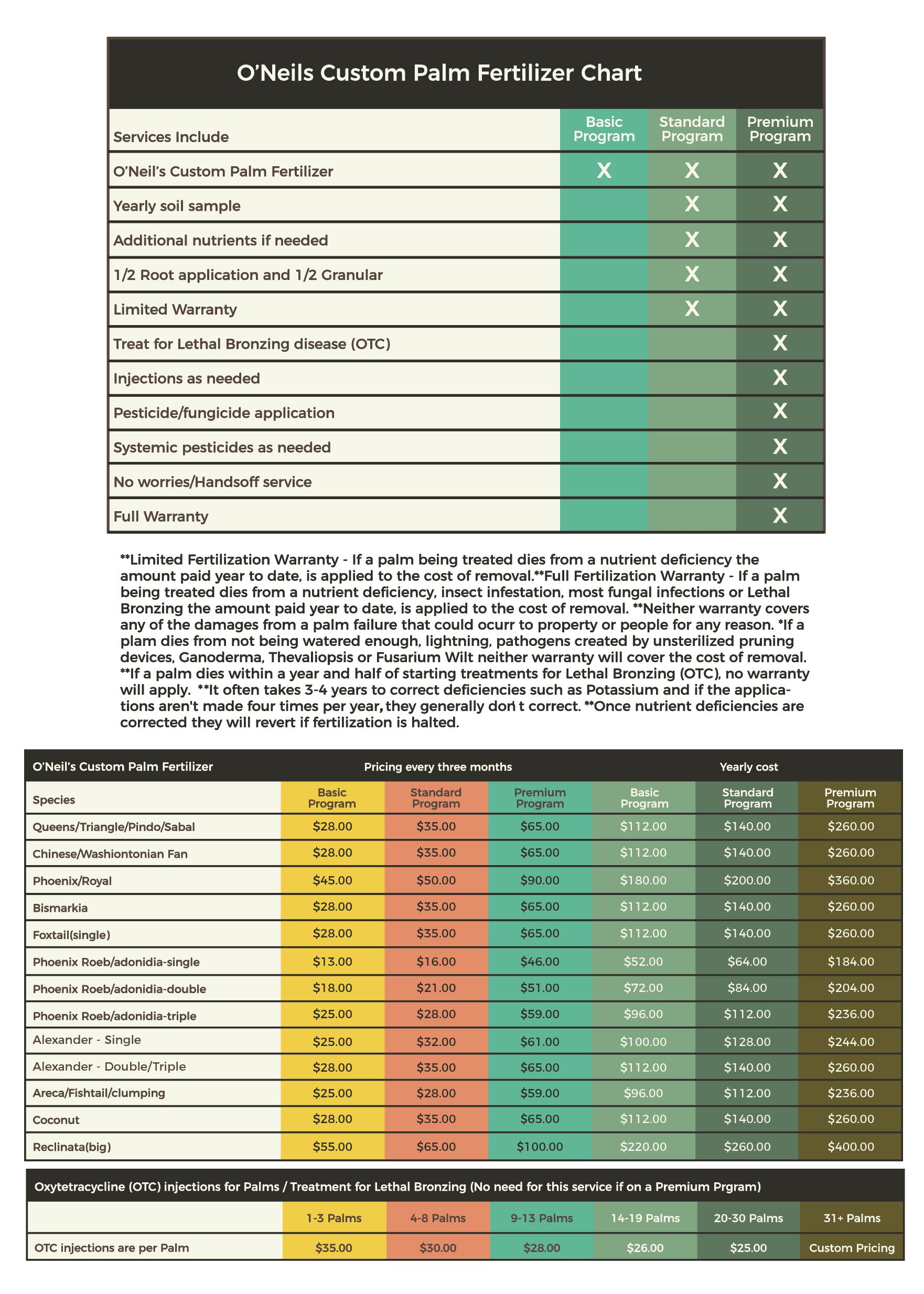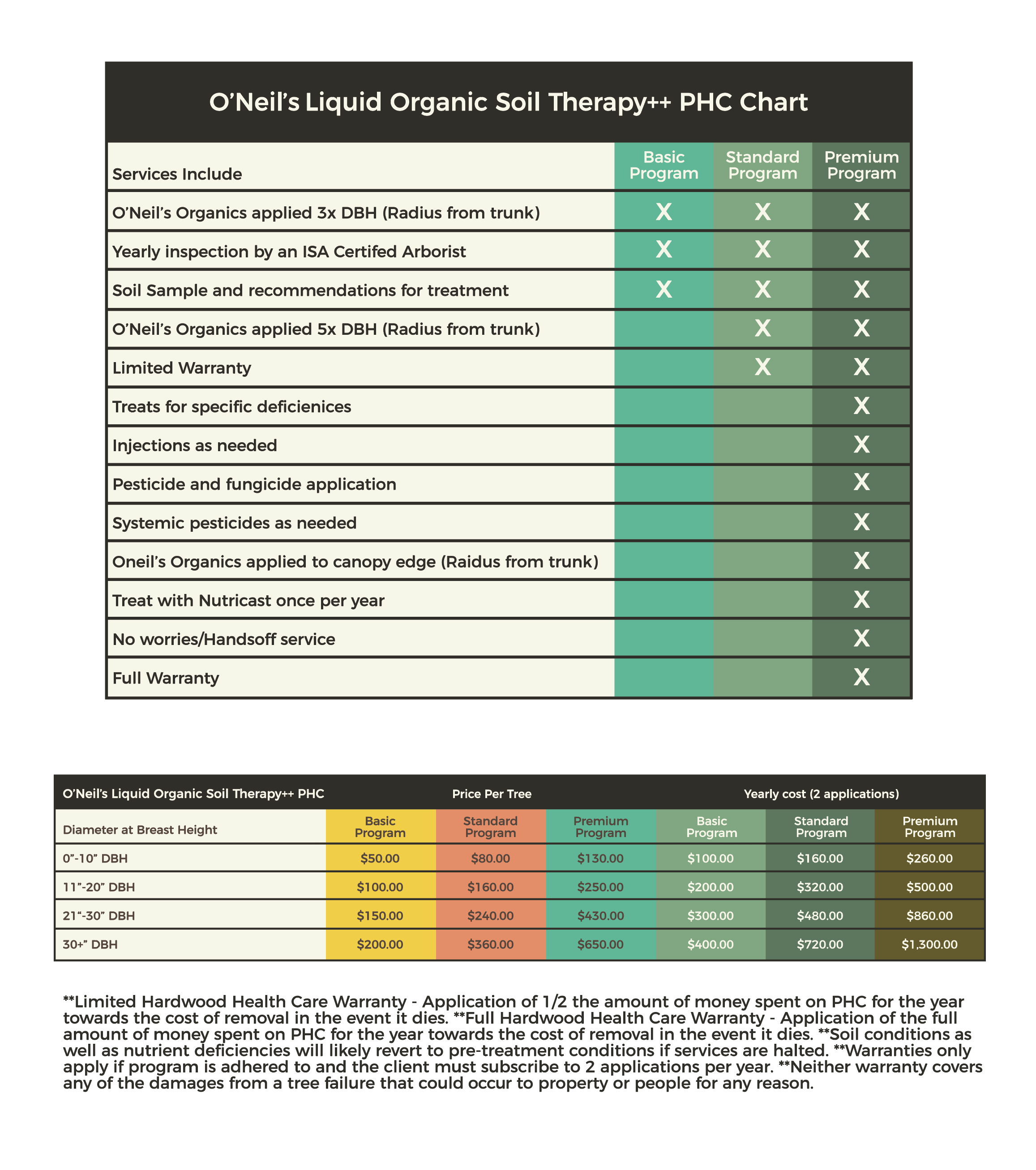Plant Healthcare
Our system of different tools and processes help improve the overall health and fertility of your tree through improving cultural conditions. Plant health care at O’Neil’s also consists of evaluating declining trees and then finding the real “Why” your tree is declining (the diagnosis) and then giving it the right treatment to revert the declining health. Trees can’t talk and tell us what is wrong with them, therefore O’Neil’s has had to learn how to speak “TREE”. We use laboratory testing on plant tissue, soil and fungi, to determine exactly what is occurring with your tree and then make a plan with you to improve the health. These plans normally consist of determining the correct nutrients your tree needs, advising you on any irrigation correction, a prescription fertilization program, soil improvements or using other tools we have in our arsenal. Ninety percent of tree issues can be prevented or corrected through improvement of the overall cultural conditions of your tree and property. We also have a palm fertilization program which can correct nutrient deficiencies such as potassium deficiency.
Below are some of the programs we offer for Plant Healthcare.


